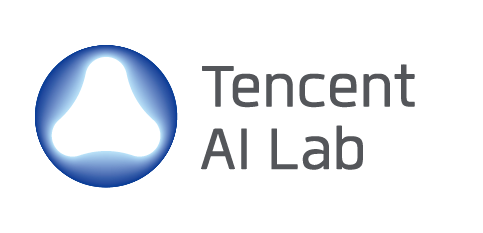IEEE SLT 2021 Online Conference
|
Session:
Anti-spoofing and Diarization in Speaker Recognition
Join Zoom
Chair: Kong Aik Lee, Man Wai Mak |
Session:
Special Session on Integration of Speech Separation, Recognition and Diarization towards Real Conversation Processing 2
Join Zoom
Chair: Shinji Watanabe, Marco Siniscalchi |
||
|
1348: SPOOFPRINT: A NEW PARADIGM FOR SPOOFING ATTACKS DETECTION Tianxiang Chen, Elie Khoury
Paper and Video (new tab)
With the development of voice spoofing techniques, voice spoofing attacks have become one of the main threats to automatic speaker verification (ASV) systems. Traditionally, researchers tend to treat this problem as a binary classification task. A binary classifier is typically trained using machine learning (including deep learning) algorithms to determine whether a given audio clip is bonafide or spoofed. This approach is effective on detecting spoofing attacks that are generated by known voice spoofing techniques. However, in practical scenario, new types of spoofing technologies are emerging rapidly. It is impossible to include all types of spoofing technologies into the training dataset, and thus it is desired that the detection system can generalize to unseen spoofing techniques. In this paper, we propose a new paradigm for spoofing attacks detection called Spoofprint. Instead of using a binary classifier to detect spoofed audio, Spoofprint uses a paradigm similar to ASV systems and involves an enrollment phase and a verification phase. We evaluate the performance on the original and noisy versions of ASVspoof 2019 logical access (LA) dataset. The results show that the proposed Spoofprint paradigm is effective on detecting unknown type of attacks and is often superior to the latest state-of-the-art. |
1037: Effective Low-Cost Time-Domain Audio Separation Using Globally Attentive Locally Recurrent Networks Max W. Y. Lam, Jun Wang, Dan Su, Dong Yu
Paper and Video (new tab)
Recent research on the time-domain audio separation networks (TasNets) has brought great success to speech separation. Nevertheless, conventional TasNets struggle to satisfy the memory and latency constraints in industrial applications. In this regard, we design a low-cost high-performance architecture, namely, globally attentive locally recurrent (GALR) network. Alike the dual-path RNN (DPRNN), we first split a feature sequence into 2D segments and then process the sequence along both the intra- and inter-segment dimensions. Our main innovation lies in that, on top of features recurrently processed along the inter-segment dimensions, GALR applies a self-attention mechanism to the sequence along the inter-segment dimension, which aggregates context-aware information and also enables parallelization. Our experiments suggest that GALR is a notably more effective network than the prior work. On one hand, with only 1.5M parameters, it has achieved comparable separation performance at a much lower cost with 36.1% less runtime memory and 49.4% fewer computational operations, relative to the DPRNN. On the other hand, in a comparable model size with DPRNN, GALR has consistently outperformed DPRNN in three datasets, in particular, with a substantial margin of 2.4dB absolute improvement of SI-SNRi in the benchmark WSJ0-2mix task. |
1256: DUAL-PATH RNN FOR LONG RECORDING SPEECH SEPARATION Chenda Li, Yi Luo, Cong Han, Jinyu Li, Takuya Yoshioka, Tianyan Zhou, Marc Delcroix, Keisuke Kinoshita, Christoph Boeddeker, Yanmin Qian, Shinji Watanabe, Zhuo Chen
Paper and Video (new tab)
Continuous speech separation (CSS) is an arising task in speech separation aiming at separating overlap-free targets from a long, partially-overlapped recording. A straightforward extension of previously proposed sentence-level separation models to this task is to segment the long recording into fixed-length blocks and perform separation on them independently. However, such simple extension does not fully address the cross-block dependencies and the separation performance may not be satisfactory. In this paper, we focus on how the block-level separation performance can be improved by exploring methods to utilize the cross-block information. Based on the recently proposed dual-path RNN (DPRNN) architecture, we investigate how DPRNN can help the block-level separation by the interleaved intra- and inter-block modules. Experiment results show that DPRNN is able to significantly outperform the baseline block-level model in both offline and block-online configurations under certain settings. |
|
|
1403: DETECTION AND EVALUATION OF HUMAN AND MACHINE GENERATED SPEECH IN SPOOFING ATTACKS ON AUTOMATIC SPEAKER VERIFICATION SYSTEMS Yang Gao, Jiachen Lian, Bhiksha Raj, Rita Singh
Paper and Video (new tab)
Automatic speaker verification (ASV) systems utilize the biometric information in human speech to verify the speaker's identity. The techniques used for performing speaker verification are often vulnerable to malicious attacks that attempt to induce the ASV system to return wrong results, allowing an impostor to bypass the system and gain access. Attackers use a multitude of spoofing techniques for this, such as voice conversion, audio replay, speech synthesis, etc. In recent years, easily available tools to generate deep-faked audio have increased the potential threat to ASV systems. In this paper, we compare the potential of human impersonation (voice disguise) based attacks with attacks based on machine-generated speech, on black-box and white-box ASV systems. We also study countermeasures by using features that capture the unique aspects of human speech production, under the hypothesis that machines cannot emulate many of the fine-level intricacies of the human speech production mechanism. We show that fundamental frequency sequence-related entropy, spectral envelope, and aperiodic parameters are promising candidates for robust detection of deep-faked speech generated by unknown methods. |
1043: INVESTIGATION OF END-TO-END SPEAKER-ATTRIBUTED ASR FOR CONTINUOUS MULTI-TALKER RECORDINGS Naoyuki Kanda, Xuankai Chang, Yashesh Gaur, Xiaofei Wang, Zhong Meng, Zhuo Chen, Takuya Yoshioka
Paper and Video (new tab)
Recently, an end-to-end (E2E) speaker-attributed automatic speech recognition (SA-ASR) model was proposed as a joint model of speaker counting, speech recognition and speaker identification for monaural overlapped speech. It showed promising results for simulated speech mixtures consisting of various numbers of speakers. However, the model required prior knowledge of speaker profiles to perform speaker identification, which significantly limited the application of the model. In this paper, we extend the prior work by addressing the case where no speaker profile is available. Specifically, we perform speaker counting and clustering by using the internal speaker representations of the E2E SA-ASR model to diarize the utterances of the speakers whose profiles are missing from the speaker inventory. We also propose a simple modification to the reference labels of the E2E SA-ASR training which helps handle continuous multi-talker recordings well. We conduct a comprehensive investigation of the original E2E SA-ASR and the proposed method on the monaural LibriCSS dataset. Compared to the original E2E SA-ASR with relevant speaker profiles, the proposed method achieves a close performance without any prior speaker knowledge. We also show that the source-target attention in the E2E SA-ASR model provides information about the start and end times of the hypotheses. |
1321: RNN-T Models Fail to Generalize to Out-of-Domain Audio: Causes and Solutions Chung-Cheng Chiu, Arun Narayanan, Wei Han, Rohit Prabhavalkar, Yu Zhang, Navdeep Jaitly, Ruoming Pang, Tara Sainath, Patrick Nguyen, Liangliang Cao, Yonghui Wu
Paper and Video (new tab)
In recent years, all-neural end-to-end approaches have obtained state-of-the-art results on several challenging automatic speech recognition (ASR) tasks. However, most existing works focus on building ASR models where train and test data are drawn from the same domain. This results in poor generalization characteristics on mismatched-domains: e.g., end-to-end models trained on short segments perform poorly when evaluated on longer utterances. In this work, we analyze the generalization properties of streaming and non-streaming recurrent neural network transducer (RNN-T) based end-to-end models in order to identify model components that negatively affect generalization performance. We propose two solutions: combining multiple regularization techniques during training, and using dynamic overlapping inference. On a long-form YouTube test set, when the non-streaming RNN-T model is trained with shorter segments of data, the proposed combination improves word error rate (WER) from 22.3% to 14.8%; when the streaming RNN-T model trained on short Search queries, the proposed techniques improve WER on the YouTube set from 67.0% to 25.3%. Finally, when trained on Librispeech, we find that dynamic overlapping inference improves WER on YouTube from 99.8% to 33.0%. |
|
|
1234: DEFENDING YOUR VOICE: ADVERSARIAL ATTACK ON VOICE CONVERSION Chien-yu Huang, Yist Y. Lin, Hung-yi Lee, Lin-shan Lee
Paper and Video (new tab)
Substantial improvements have been achieved in recent years in voice conversion, which converts the speaker characteristics of an utterance into those of another speaker without changing the linguistic content of the utterance. Nonetheless, the improved conversion technologies also led to concerns about privacy and authentication. It thus becomes highly desired to be able to prevent one's voice from being improperly utilized with such voice conversion technologies. This is why we report in this paper the first known attempt to perform adversarial attack on voice conversion. We introduce human imperceptible noise into the utterances of a speaker whose voice is to be defended. Given these adversarial examples, voice conversion models cannot convert other utterances so as to sound like being produced by the defended speaker. Preliminary experiments were conducted on two currently state-of-the-art zero-shot voice conversion models. Objective and subjective evaluation results in both white-box and black-box scenarios are reported. It was shown that the speaker characteristics of the converted utterances were made obviously different from those of the defended speaker, while the adversarial examples of the defended speaker are not distinguishable from the authentic utterances. |
1118: WPD++: AN IMPROVED NEURAL BEAMFORMER FOR SIMULTANEOUS SPEECH SEPARATION AND DEREVERBERATION Zhaoheng Ni, Yong Xu, Meng Yu, Bo Wu, Shixiong Zhang, Dong Yu, Michael I Mandel
Paper and Video (new tab)
This paper aims at eliminating the interfering speakers' speech, additive noise, and reverberation from the noisy multi-talker speech mixture that benefits automatic speech recognition (ASR) backend. While the recently proposed Weighted Power minimization Distortionless response (WPD) beamformer can perform separation and dereverberation simultaneously, the noise cancellation component still has the potential to progress. We propose an improved neural WPD beamformer called ``WPD++'' by an enhanced beamforming module in the conventional WPD and a multi-objective loss function for the joint training. The beamforming module is improved by utilizing the spatio-temporal correlation. A multi-objective loss, including the complex spectra domain scale-invariant signal-to-noise ratio (C-Si-SNR) and the magnitude domain mean square error (Mag-MSE), is properly designed to make multiple constraints on the enhanced speech and the desired power of the dry clean signal. Joint training is conducted to optimize the complex-valued mask estimator and the WPD++ beamformer in an end-to-end way. The results show that the proposed WPD++ outperforms several state-of-the-art beamformers on the enhanced speech quality and word error rate (WER) of ASR. |
1332: DOVER-LAP: A METHOD FOR COMBINING OVERLAP-AWARE DIARIZATION OUTPUTS Desh Raj, Leibny Paola Garcia Perera, Zili Huang, Shinji Watanabe, Daniel Povey, Andreas Stolcke, Sanjeev Khudanpur
Paper and Video (new tab)
Several advances have been made recently towards handling overlapping speech for speaker diarization. Since speech and natural language tasks often benefit from ensemble techniques, we propose an algorithm for combining outputs from such diarization systems through majority voting. Our method, DOVER-Lap, is inspired from the recently proposed DOVER algorithm, but is designed to handle overlapping segments in diarization outputs. We also modify the pair-wise incremental label mapping strategy used in DOVER, and propose an approximation algorithm based on weighted k-partite graph matching, which performs this mapping using a global cost tensor. We demonstrate the strength of our method by combining outputs from diverse systems --- clustering-based, region proposal networks, and target-speaker voice activity detection --- on AMI and LibriCSS datasets, where it consistently outperforms the single best system. Additionally, we show that DOVER-Lap can be used for late fusion in multichannel diarization, and compares favorably with early fusion methods like beamforming. |
|
|
1211: LIGHTWEIGHT VOICE ANONYMIZATION BASED ON DATA-DRIVEN OPTIMIZATION OF CASCADED VOICE MODIFICATION MODULES Hiroto Kai, Shinnosuke Takamichi, Sayaka Shiota, Hitoshi Kiya
Paper and Video (new tab)
In this paper, we propose a voice anonymization framework based on data-driven optimization of cascaded voice modification modules. With increasing opportunities to use speech dialogue with machines nowadays, research regarding privacy protection of speaker information encapsulated in speech data is attracting attention. Anonymization, which is one of the methods for privacy protection, is based on signal processing manners, and the other one based on machine learning ones. Both approaches have a trade off between intelligibility of speech and degree of anonymization. The proposed voice anonymization framework utilizes advantages of machine learning and signal processing-based approaches to find the optimized trade off between the two. We use signal processing methods with training data for optimizing hyperparameters in a data-driven manner. The speech is modified using cascaded lightweight signal processing methods and then evaluated using black-box ASR and ASV, respectively. Our proposed method succeeded in deteriorating the speaker recognition rate by approximately 22% while simultaneously improved the speech recognition rate by over 3% compared to a signal processing-based conventional method. |
1128: DISTORTION-CONTROLLED TRAINING FOR END-TO-END REVERBERANT SPEECH SEPARATION WITH AUXILIARY AUTOENCODING LOSS Yi Luo, Cong Han, Nima Mesgarani
Paper and Video (new tab)
The performance of speech enhancement and separation systems in anechoic environments has been significantly advanced with the recent progress in end-to-end neural network architectures. However, the performance of such systems in reverberant environments is yet to be explored. A core problem in reverberant speech separation is about the training and evaluation metrics. Standard time-domain metrics may introduce unexpected distortions during training and fail to properly evaluate the separation performance due to the presence of the reverberations. In this paper, we first introduce the ``equal-valued contour'' problem in reverberant separation where multiple outputs can lead to the same performance measured by the common metrics. We then investigate how ``better'' outputs with lower target-specific distortions can be selected by auxiliary autoencoding training (A2T). A2T assumes that the separation is done by a linear operation on the mixture signal, and it adds an loss term on the autoencoding of the direct-path target signals to ensure that the distortion introduced on the direct-path signals is controlled during separation. Evaluations on separation signal quality and speech recognition accuracy show that A2T is able to control the distortion on the direct-path signals and improve the recognition accuracy. |
1333: INTEGRATION OF VARIATIONAL AUTOENCODER AND SPATIAL CLUSTERING FOR ADAPTIVE MULTI-CHANNEL NEURAL SPEECH SEPARATION Katerina Zmolikova, Marc Delcroix, Lukáš Burget, Tomohiro Nakatani, Jan Černocký
Paper and Video (new tab)
In this paper, we propose a method combining variational autoencoder model of speech with a spatial clustering approach for multi-channel speech separation. The advantage of integrating spatial clustering with a spectral model was shown in several works. As the spectral model, previous works used either factorial generative models of the mixed speech or discriminative neural networks. In our work, we combine the strengths of both approaches, by building a factorial model based on a generative neural network, a variational autoencoder. By doing so, we can exploit the modeling power of neural networks, but at the same time, keep a structured model. Such a model can be advantageous when adapting to new noise conditions as only the noise part of the model needs to be modified. We show experimentally, that our model significantly outperforms previous factorial model based on Gaussian mixture model (DOLPHIN), performs comparably to integration of permutation invariant training with spatial clustering, and enables us to easily adapt to new noise conditions. |
|
|
1226: LOOK WHO’S NOT TALKING Youngki Kwon, Hee Soo Heo, Jaesung Huh, Bong-Jin Lee, Joon Son Chung
Paper and Video (new tab)
The objective of this work is speaker diarisation of speech recordings 'in the wild'. The ability to determine speech segments is a crucial part of diarisation systems, accounting for a large proportion of errors. In this paper, we present a simple but effective solution for speech activity detection based on the speaker embeddings. In particular, we discover that the norm of the speaker embedding is an extremely effective indicator of speech activity. The method does not require an independent model for speech activity detection, therefore allows speaker diarisation to be performed using a unified representation for both speaker modelling and speech activity detection. We perform a number of experiments on in-house and public datasets, in which our method outperforms popular baselines. |
1148: Exploring End-to-End Multi-channel ASR with Bias Information for Meeting Transcription Xiaofei Wang, Naoyuki Kanda, Yashesh Gaur, Zhuo Chen, Zhong Meng, Takuya Yoshioka
Paper and Video (new tab)
Joint optimization of multi-channel front-end and automatic speech recognition (ASR) has attracted much interest. While promising results have been reported for various tasks, past studies on its meeting transcription application were limited to small scale experiments. It is still unclear whether such a joint framework can be beneficial for a more practical setup where a massive amount of single channel training data can be leveraged for building a strong ASR back-end. In this work, we present our investigation on the joint modeling of a mask-based beamformer and Attention-Encoder-Decoder-based ASR in the setting where we have 75k hours of single-channel data and a relatively small amount of real multi-channel data for model training. We explore effective training procedures, including a comparison of simulated and real multi-channel training data. To guide the recognition towards a target speaker and deal with overlapped speech, we also explore various combinations of bias information, such as direction of arrivals and speaker profiles. We propose an effective location bias integration method called deep concatenation for the beamformer network. In our evaluation on various meeting recordings, we show that the proposed framework achieves a substantial word error rate reduction. |
1346: INTEGRATION OF SPEECH SEPARATION, DIARIZATION, AND RECOGNITION FOR MULTI-SPEAKER MEETINGS: SYSTEM DESCRIPTION, COMPARISON, AND ANALYSIS Desh Raj, Pavel Denisov, Zhuo Chen, Hakan Erdogan, Zili Huang, Maokui He, Shinji Watanabe, Jun Du, Takuya Yoshioka, Yi Luo, Naoyuki Kanda, Jinyu Li, Scott Wisdom, John R. Hershey
Paper and Video (new tab)
Multi-speaker speech recognition of unsegmented recordings has diverse applications such as meeting transcription and automatic subtitle generation. With technical advances in systems dealing with speech separation, speaker diarization, and automatic speech recognition (ASR) in the last decade, it has become possible to build pipelines that achieve reasonable error rates on this task. In this paper, we propose an end-to-end modular system for the LibriCSS meeting data, which combines independently trained separation, diarization, and recognition components, in that order. We study the effect of different state-of-the-art methods at each stage of the pipeline, and report results using task-specific metrics like SDR and DER, as well as downstream WER. Experiments indicate that the problem of overlapping speech for diarization and ASR can be effectively mitigated with the presence of a well-trained separation module. Our best system achieves a speaker-attributed WER of 12.70%, which is close to that of a non-overlapping ASR. |
|
|
1367: DISCRIMINATIVE NEURAL CLUSTERING FOR SPEAKER DIARISATION Qiujia Li, Florian Kreyssig, Chao Zhang, Phil Woodland
Paper and Video (new tab)
In this paper, we propose Discriminative Neural Clustering (DNC) that formulates data clustering with a maximum number of clusters as a supervised sequence-to-sequence learning problem. Compared to traditional unsupervised clustering algorithms, DNC learns clustering patterns from training data without requiring an explicit definition of a similarity measure. An implementation of DNC based on the Transformer architecture is shown to be effective on a speaker diarisation task using the challenging AMI dataset. Since AMI contains only 147 complete meetings as individual input sequences, data scarcity is a significant issue for training a Transformer model for DNC. Accordingly, this paper proposes three data augmentation schemes: sub-sequence randomisation, input vector randomisation, and Diaconis augmentation, which generates new data samples by rotating the entire input sequence of L2-normalised speaker embeddings. Experimental results on AMI show that DNC achieves a reduction in speaker error rate (SER) of 29.4% relative to spectral clustering. |
1195: Online End-to-End Neural Diarization with Speaker-Tracing Buffer Yawen Xue, Shota Horiguchi, Yusuke Fujita, Shinji Watanabe, Paola Garcia, Kenji Nagamatsu
Paper and Video (new tab)
This paper proposes a novel online speaker diarization algorithm based on a fully supervised self-attention mechanism (SA-EEND). Online diarization inherently presents a speaker’s permutation problem due to the possibility to assign speaker regions incorrectly across the recording. To circumvent this inconsistency, we proposed a speaker-tracing buffer mechanism that selects several input frames representing the speaker permutation information from previous chunks and stores them in a buffer. These buffered frames are stacked with the input frames in the current chunk and fed into a self-attention network. Our method ensures consistent diarization outputs across the buffer and the current chunk by checking the correlation between their corresponding outputs. Additionally, we trained SA-EEND with variable chunk-sizes to mitigate the mismatch between training and inference introduced by the speaker-tracing buffer mechanism. Experimental results, including online SA-EEND and variable chunk-size, achieved DERs of 12.54% for CALLHOME and 20.77% for CSJ with 1.4 actual latency. |
1347: SEQUENTIAL MULTI-FRAME NEURAL BEAMFORMING FOR SPEECH SEPARATION AND ENHANCEMENT Zhong-Qiu Wang, Hakan Erdogan, Scott Wisdom, Kevin Wilson, Desh Raj, Shinji Watanabe, Zhuo Chen, John Hershey
Paper and Video (new tab)
This work introduces sequential neural beamforming, which alternates between neural network based spectral separation and beamforming based spatial separation. Our neural networks for separation use an advanced convolutional architecture trained with a novel stabilized signal-to-noise ratio loss function. For beamforming, we explore multiple ways of computing time-varying covariance matrices, including factorizing the spatial covariance into a time-varying amplitude component and a time-invariant spatial component, as well as using block-based techniques. In addition, we introduce a multi-frame beamforming method which improves the results significantly by adding contextual frames to the beamforming formulations. We extensively evaluate and analyze the effects of window size, block size, and multi-frame context size for these methods. Our best method utilizes a sequence of three neural separation and multi-frame time-invariant spatial beamforming stages, and demonstrates an average improvement of 2.75 dB in scale-invariant signal-to-noise ratio and 14.2% absolute reduction in a comparative speech recognition metric across four challenging reverberant speech enhancement and separation tasks. We also use our three-speaker separation model to separate real recordings in the LibriCSS evaluation set into non-overlapping tracks, and achieve a better word error rate as compared to a baseline mask based beamformer. |
|
|
1259: MULTI-CLASS SPECTRAL CLUSTERING WITH OVERLAPS FOR SPEAKER DIARIZATION Desh Raj, Zili Huang, Sanjeev Khudanpur
Paper and Video (new tab)
This paper describes a method for overlap-aware speaker diarization. Given an overlap detector and a speaker embedding extractor, our method performs spectral clustering of segments under overlap constraints. This is achieved by transforming the discrete clustering problem into a relaxed optimization problem which is solved by eigen-decomposition. Thereafter, we discretize the solution by alternatively using singular value decomposition and a modified version of non-maximal suppression which is constrained by the output of the overlap detector. Furthermore, we detail an HMM-DNN based overlap detector which performs frame-level classification and enforces constraints through HMM state transitions. Our method achieves a test DER of 24.0% on the mixed-headset setting of the AMI meeting corpus, which is a relative improvement of 15.2% over a strong agglomerative hierarchical clustering baseline, and compares favorably with other overlap-aware diarization methods. Further analysis on the LibriCSS data demonstrates the effectiveness of the proposed method in high overlap conditions. |
1205: END-TO-END SPEAKER DIARIZATION CONDITIONED ON SPEECH ACTIVITY AND OVERLAP DETECTION Yuki Takashima, Yusuke Fujita, Shinji Watanabe, Shota Horiguchi, Paola Garcia, Kenji Nagamatsu
Paper and Video (new tab)
In this paper, we present a conditional multitask learning method for end-to-end neural speaker diarization (EEND). The EEND system has shown promising performance compared with traditional clustering-based methods, especially in the case of overlapping speech. In this paper, to further improve the performance of the EEND system, we propose a novel multitask learning framework that solves speaker diarization and a desired subtask while explicitly considering the task dependency. We optimize speaker diarization conditioned on speech activity and overlap detection that are subtasks of speaker diarization, based on the probabilistic chain rule. Experimental results show that our proposed method can leverage a subtask to effectively model speaker diarization, and outperforms conventional EEND systems in terms of diarization error rate. |
1365: ACOUSTIC MODELING FOR MULTI-ARRAY CONVERSATIONAL SPEECH RECOGNITION IN THE CHIME-6 CHALLENGE Li Chai, Jun Du, Di-Yuan Liu, Yan-Hui Tu, Chin-Hui Lee
Paper and Video (new tab)
This paper presents our main contributions of acoustic modeling for multi-array multi-talker speech recognition in the CHiME-6 Challenge, exploring different strategies for acoustic data augmentation and neural network architectures. First, enhanced data from our front-end network preprocessing and spectral augmentation are investigated to be effective for improving speech recognition performance. Second, several neural network architectures are explored by different combinations of deep residual network (ResNet), factorized time delay neural network (TDNNF) and residual bidirectional long short-term memory (RBiLSTM). Finally, multiple acoustic models can be combined via minimum Bayes risk fusion. Compared with the official baseline acoustic model, the proposed solution can achieve a relatively word error rate reduction of 19% for the best single ASR system on the evaluation data, which is also one of main contributions to our top system for the Track 1 tasks of the CHiME-6 Challenge. |
|
|
1184: DEVELOPING NEURAL REPRESENTATIONS FOR ROBUST CHILD-ADULT DIARIZATION Suchitra Krishnamachari, Manoj Kumar, So Hyun Kim, Catherine Lord, Shrikanth Narayanan
Paper and Video (new tab)
Automated processing and analysis of child speech has been long acknowledged as a harder problem compared to understanding speech by adults. Specifically, conversations between a child and adult involve spontaneous speech which often compounds idiosyncrasies associated with child speech. In this work, we improve upon the task of speaker diarization (determining who spoke when) from audio of child-adult conversations in naturalistic settings. We select conversations from the autism diagnosis and intervention domains, wherein speaker diarization forms an important step towards computational behavioral analysis in support of clinical research and decision making. We train deep speaker embeddings using publicly available child speech and adult speech corpora, unlike predominant state-of-art models which typically utilize only adult speech for speaker embedding training. We demonstrate significant reductions in relative diarization error rate (DER) on DIHARD II (dev) sessions containing child speech (22.88%) and two internal corpora representing interactions involving children with Autism: excerpts from ADOSMod3 sessions(33.7%) and combination of fulllength ADOS and BOSCC sessions (44.99%). Further, we validate our improvements in identifying the child speaker (typically with short speaking time) using the recall measure. Finally, we analyze the effect of fundamental frequency augmentation and the effect of child age, gender on speaker diarization performance. |
1249: DesNet: A Multi-channel Network for Simultaneous Speech Dereverberation, Enhancement and Separation Yihui Fu, Jian Wu, Yanxin Hu, Mengtao Xing, Lei Xie
Paper and Video (new tab)
In this paper, we propose a multi-channel network for simultaneous speech dereverberation, enhancement and separation (DESNet). To enable gradient propagation and joint optimization, we adopt the attentional selection mechanism of the multi-channel features, which is originally proposed in end-to-end unmixing, fixed-beamforming and extraction (E2E-UFE) structure. Furthermore, the novel deep complex convolutional recurrent network (DCCRN) is used as the structure of the speech unmixing and the neural network based weighted prediction error (WPE) is cascaded beforehand for speech dereverberation. We also introduce the staged SNR strategy and symphonic loss for the training of the network to further improve the final performance. Experiments show that in non-dereverberated case, the proposed DESNet outperforms DCCRN and most state-of-the-art structures in speech enhancement and separation, while in dereverberated scenario, DESNet also shows improvements over the cascaded WPE-DCCRN networks. |
1233: UIAI System for Short-Duration Speaker Verification Challenge 2020 Md Sahidullah, Achintya Kumar Sarkar, Ville Vestman, Xuechen Liu, Romain Serizel, Tomi Kinnunen, Zheng-Hua Tan, Emmanuel Vincent
Paper and Video (new tab)
In this work, we present the system description of the UIAI entry for the short-duration speaker verification (SdSV) challenge 2020. Our focus is on Task 1 dedicated to text-dependent speaker verification. We investigate different feature extraction and modeling approaches for automatic speaker verification (ASV) and utterance verification (UV). We have also studied different fusion strategies for combining UV and ASV modules. Our primary submission to the challenge is the fusion of seven subsystems which yields a normalized minimum detection cost function (minDCF) of 0.072 and an equal error rate (EER) of 2.14% on the evaluation set. The single system consisting of a pass-phrase identification based model with phone-discriminative bottleneck features gives a normalized minDCF of 0.118 and achieves 19% relative improvement over the state-of-the-art challenge baseline. |
|
|
Q&A |
Q&A |
Q&A |
|














